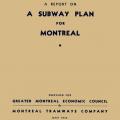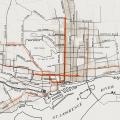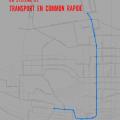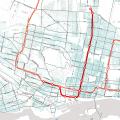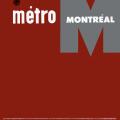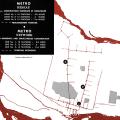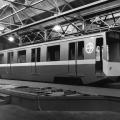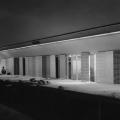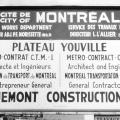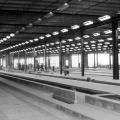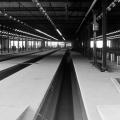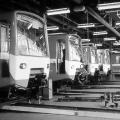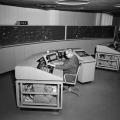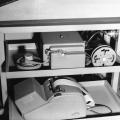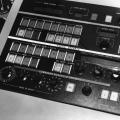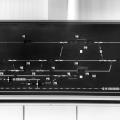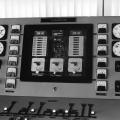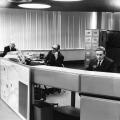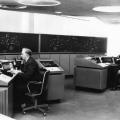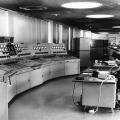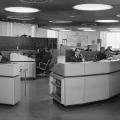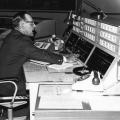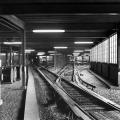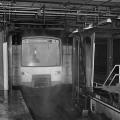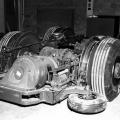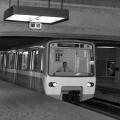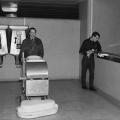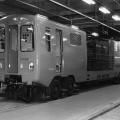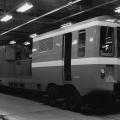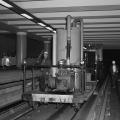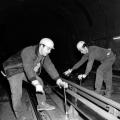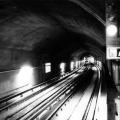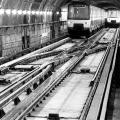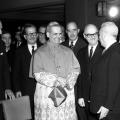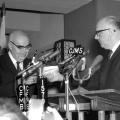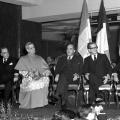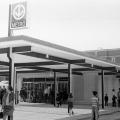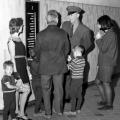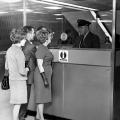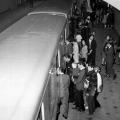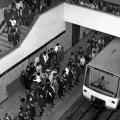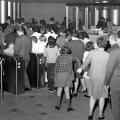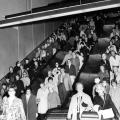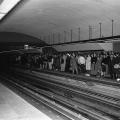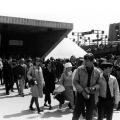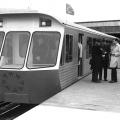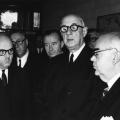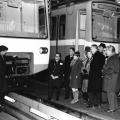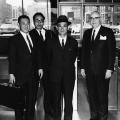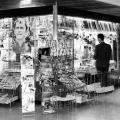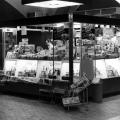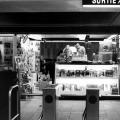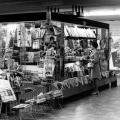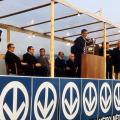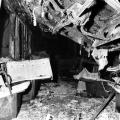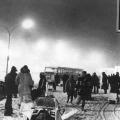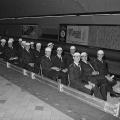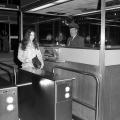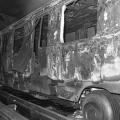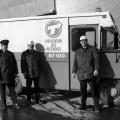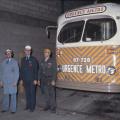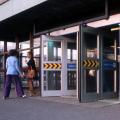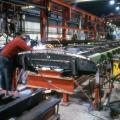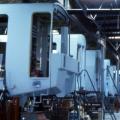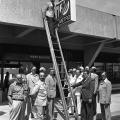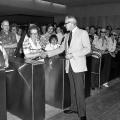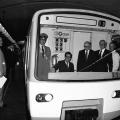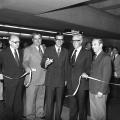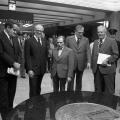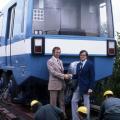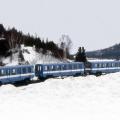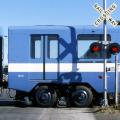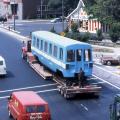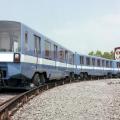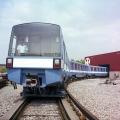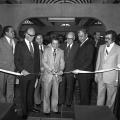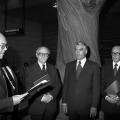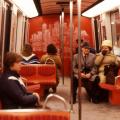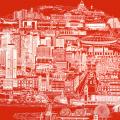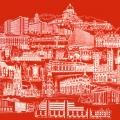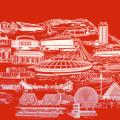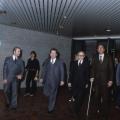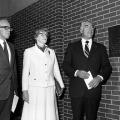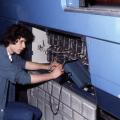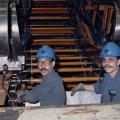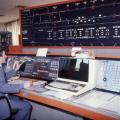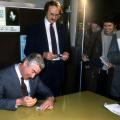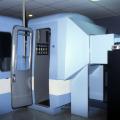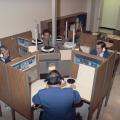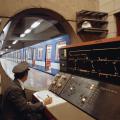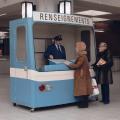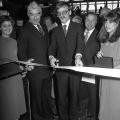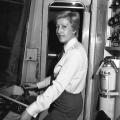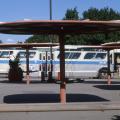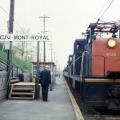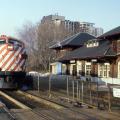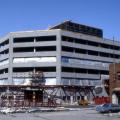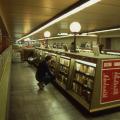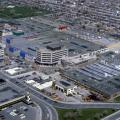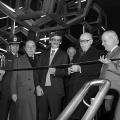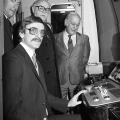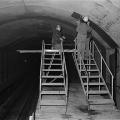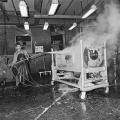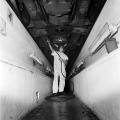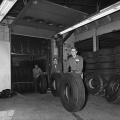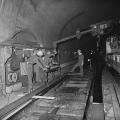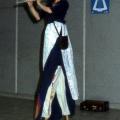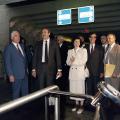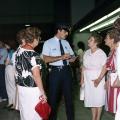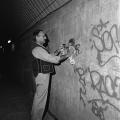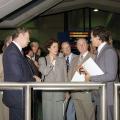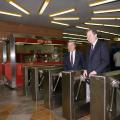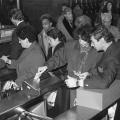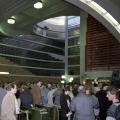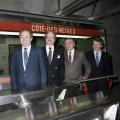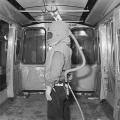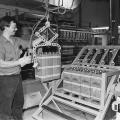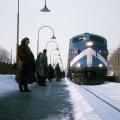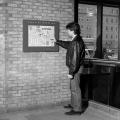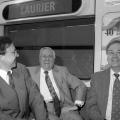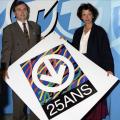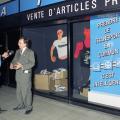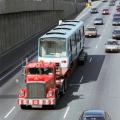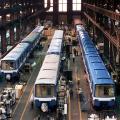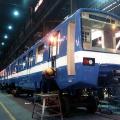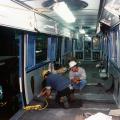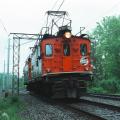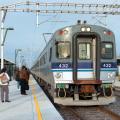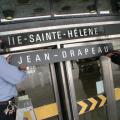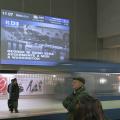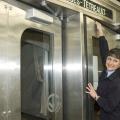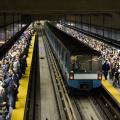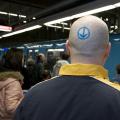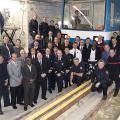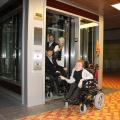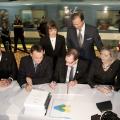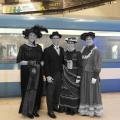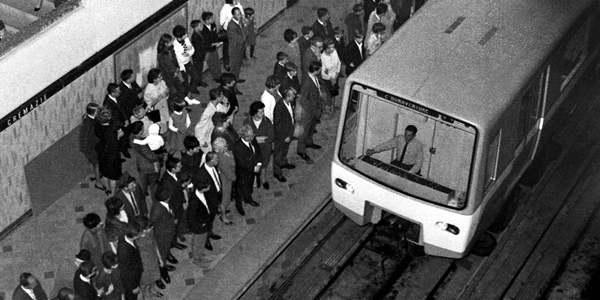
MR-63 train at Crémazie station (1966)
The first métro system was opened in London in 1863. It was in fact a network of steam trains travelling through underground tunnels. It wasn’t until the 1890s that the first electrically powered underground transit system appeared. In Montreal, there was talk as early as 1910 of constructing tunnels to facilitate the tramway traffic around the downtown area. However, the economic crisis of the 1930s stopped that project from happening. The Montreal Tramways Company revived the idea in 1944 with a true métro project, however the Second World War and the discussions concerning the municipalization of public transportation kept them from moving forward with it.
In 1953, the new Montreal Transportation Commission proposed its own métro project. The first phase involved construction of a 12.5 km line under Saint-Denis, Saint-Jacques and Sainte-Catherine streets, at a cost of $117 million. All it required was the approval of Montreal’s elected officials, but they postponed the project out of an excess of caution. Meanwhile, the City of Toronto forged ahead with its own plans and inaugurated its first métro stations in 1954. The success of the Toronto Subway proved that freeways could not solve all of the urban traffic problems. Montreal needed a métro, but who would finally dare to make this project a reality?
Click on these STM Archives pictures to enlarge them.
The election in 1960 of the duo formed by Jean Drapeau and Lucien Saulnier marked the beginning of realizing the Montreal métro. The blueprint presented on October 20, 1961 called for three lines: line 1 (green) running east-west, line 2 (orange) running north-south, and line 3, running under Mount Royal. In the end, line 3 would be eliminated in favour of an entirely new line (4 - yellow) running under the St. Lawrence River to service the site of the 1967 World Fair. On November 3, 1961, The City of Montreal allocated $132 million to build the métro. Construction of the initial network was entrusted to the City and its Bureau du métro, which was headed by senior engineer Lucien L’Allier.
The basic principles that would make the Montreal métro famous were quickly decided: first métro to run only on tires, an entirely underground network, and a different architectural design for each station. The first contract was awarded in April 1962 and on May 23, work began on Berri Street, south of Jarry Street. The following year, the cost of the project increased to $213 million, mainly due to the addition of line 4 (yellow). The contract to build 369 MR-63 métro cars was awarded to the Canadian Vickers company, which delivered the first cars on August 24, 1965. At the peak of the construction, there were more than 5,000 people working at the extensive job site.
Click on these STM Archives pictures to enlarge them. Note: photos of the construction of the métro's initial network are at the City of Montreal Archives.
The first 20 stations were inaugurated on October 14, 1966 with Mayor Drapeau and Cardinal Paul-Émile Léger in attendance. A million people tried the métro during its first weekend of operation. The initial network, completed in spring of 1967, had three lines with 26 stations: the green line, from Atwater to Frontenac; the orange line, from Henri-Bourassa to Bonaventure; and the yellow line, from Berri-De Montigny (Berri-UQAM today) to Longueuil. Over 130 million trips were recorded in the first year, the same year as Expo 67 which drew more than 50 million visitors; the Île-Sainte-Hélène (today’s Jean-Drapeau) Station alone handled 418,000 people in one day.
The work to extend the network began on October 14, 1971, exactly five years after the métro opened. The Bureau de transport métropolitain (BTM) of the Communauté urbaine de Montréal (CUM) oversaw the work, which was partially financed by the province. The green line would be extended to Honoré-Beaugrand Street and Angrignon Park, and the orange line to De Salaberry Street. A new line, (5 - blue) would also connect Ville Saint-Pierre with Montreal North. However, inflation and construction delays ballooned the cost from $430 million in 1971 to $1.6 billion in 1975. In May 1976, the province imposed a moratorium on all extensions, which would be partially lifted during the following decade.
Click on these STM Archives pictures to enlarge them.
In March 1971, the métro ran all night for the first time when Montreal was paralyzed by the “storm of the century.” Two major fires, one in 1971 in the tail-tracks section of the Henri-Bourassa Station and the other in 1974 between the Laurier and Rosemont stations, led to improved network safety measures. In 1974, Bombardier won the contract to build 423 MR-73 métro cars, which were delivered starting in July 1976 and put into service in December that same year. The green line was extended to the Honoré-Beaugrand Station in June 1976 and to the Angrignon Station in 1978. Meanwhile, auto-pilot operation was implemented starting in November 1976.
The orange line was extended in successive sections from 1980 to 1986, while the blue line was put into service from 1986 to 1988. However, these would be the last network extensions prior to the opening of the three new stations in Laval in 2007. One other highlight for this decade is Lisette Renaud becoming the first woman to operate a métro train in 1981. On September 11, 1984, the visit of Pope Jean-Paul II resulted in a record two million métro and bus passengers in one day. Finally, the testing of swipe-card readers in 1987 led to a major reduction in passengers’ wait times at the turnstiles. Starting in 1982, the company also operates the commuter train lines to Rigaud and Deux-Montagnes.
Click on these STM Archives pictures to enlarge them.
The first métro Park and Ride was opened next to the Radisson Station in 1990. That same year, the company began installing neighbourhood maps at all stations. Also that year, the contract to renovate the 336 MR-63 cars was awarded to CN’s shops (AMF). An electronic display system was installed in the MR-73 cars starting in 1991. The first multiservice centre was opened at the Berri-UQAM Station in 1993, enhancing customer service. In 1996, operation of the modernized commuter train lines to Rigaud and Deux-Montagnes was transferred to the new Agence métropolitaine de transport (AMT). The 1998 “ice storm” once again underscored the value of Montreal’s entirely underground métro. To ring in the year 2000, the métro and buses provided free service all night.
Long-awaited work to extend the orange line to Laval began on March 18, 2002. The new Cartier, De la Concorde and Montmorency stations were officially inaugurated on April 26, 2007. Meanwhile, in 2004, the STM launched Phase I of the Réno-Systèmes program aimed at maintaining the reliability of the métro’s stationary equipment. In 2005, STM employees started refitting the company’s 423 MR-73 cars. In 2007, the company also opened its new underground fire-prevention training facility (Centre de formation souterrain en prévention des incendies). And the decade ended with the Bombardier-Alstom consortium being awarded the contract to build 468 MPM-10 cars.
Click on these STM Archives pictures to enlarge them.
